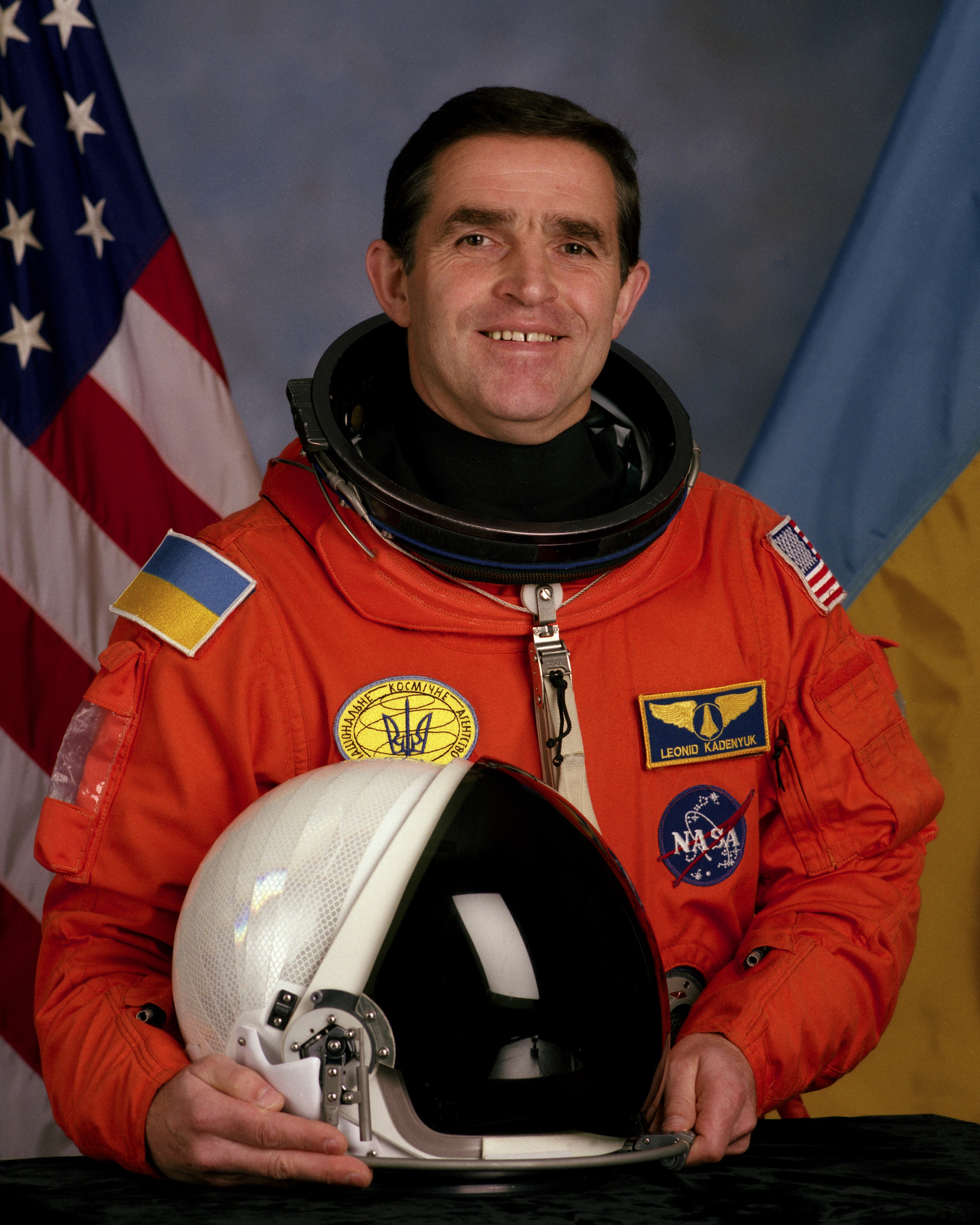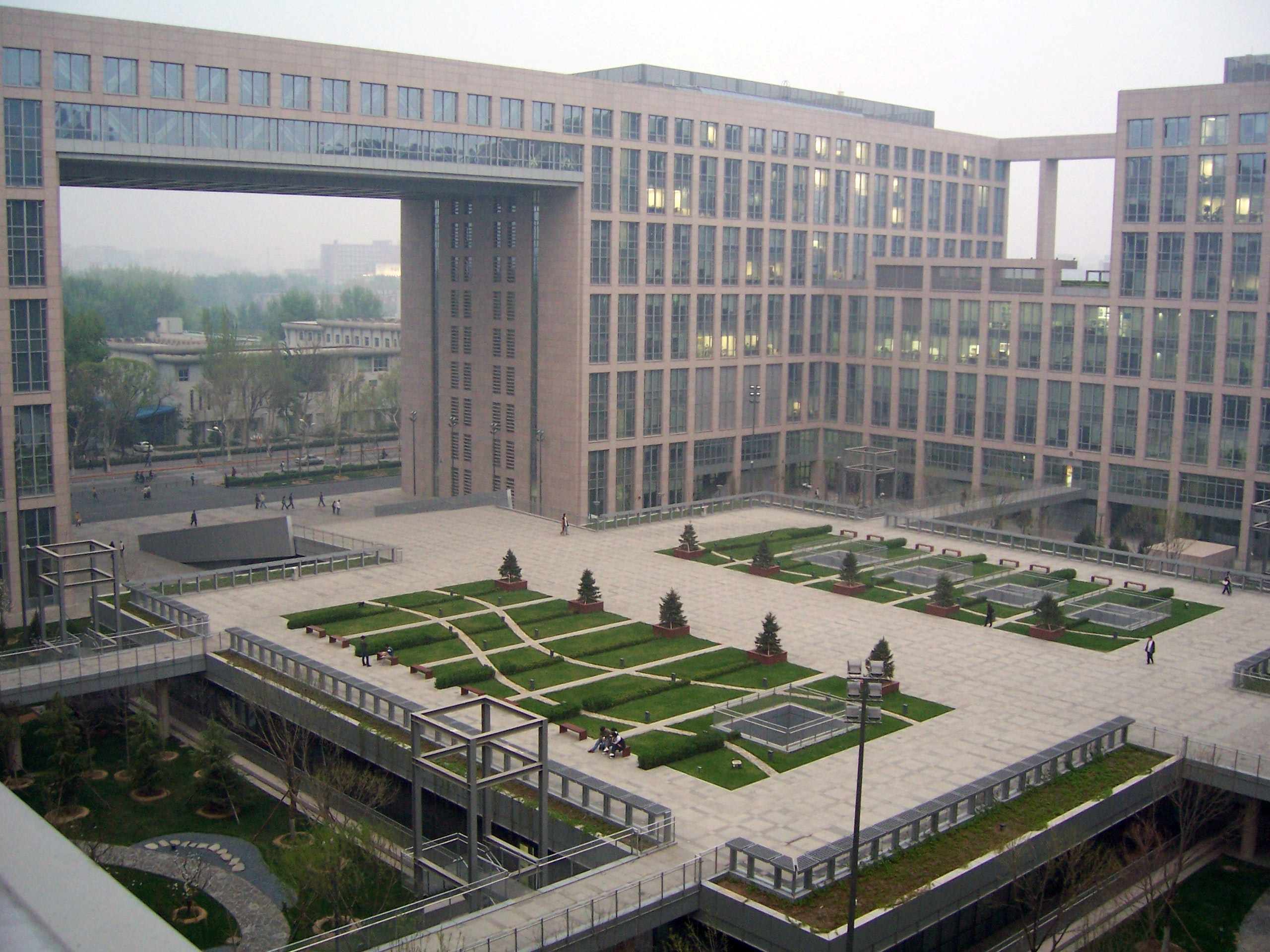|
Shenzhou 16
Shenzhou 16 () was a Chinese spaceflight to the Tiangong space station, launched on 30 May 2023. It carried two People's Liberation Army Astronaut Corps (PLAAC) taikonauts and a payload specialist from Beihang University on board a Shenzhou spacecraft. The mission was the eleventh crewed Chinese spaceflight and the sixteenth flight overall of the Shenzhou program. Background Shenzhou 16 was the fifth spaceflight to the Tiangong space station, with a mission duration of approximately five months. The spacecraft completed construction and testing in December 2022, and prior to launch was maintained in a state of near-readiness if needed as a lifeboat for the Shenzhou 15 crew. Mission The flight launched from Jiuquan Satellite Launch Center on 30 May 2023 at 9:31 AM China Standard Time (01:31 UTC), following the launch of the Tianzhou 6 cargo spacecraft and near the end of the Shenzhou 15 mission. Just under 7 hours after launch, the spacecraft docked with the ''Tianhe'' ... [...More Info...] [...Related Items...] OR: [Wikipedia] [Google] [Baidu] |
Long March 2F
The Long March 2F ( ''Changzheng 2F''), also known as the CZ-2F, LM-2F and Shenjian (, "Divine Arrow"), is a Chinese orbital carrier rocket, part of the Long March 2 rocket family. Designed to launch crewed Shenzhou spacecraft, the Long March 2F is a human-rated two-stage version of the Long March 2E rocket, which in turn was based on the Long March 2C launch vehicle. It is launched from complex SLS at the Jiuquan Satellite Launch Center. The Long March 2F made its maiden flight on 19 November 1999, with the Shenzhou 1 spacecraft. After the flight of Shenzhou 3, CPC General Secretary and President Jiang Zemin named the rocket "Shenjian", meaning "Divine Arrow". On 29 December 2002, a Long March 2F launched Shenzhou 4 for a final uncrewed test of the Shenzhou spacecraft for the upcoming flight of the first crewed mission. Until then, all missions were uncrewed. On 15 October 2003, a Long March 2F launched Shenzhou 5, China's maiden crewed mission and achieved its first huma ... [...More Info...] [...Related Items...] OR: [Wikipedia] [Google] [Baidu] |
Shenzhou 15
Shenzhou 15 () was a Chinese spaceflight to the Tiangong space station, launched on 29 November 2022. It carried three People's Liberation Army Astronaut Corps (PLAAC) taikonauts on board a Shenzhou spacecraft. The mission was the tenth crewed Chinese spaceflight and the fifteenth flight overall of the Shenzhou program. Background Shenzhou 15 was the fourth spaceflight to the Tiangong space station, and the third with a standard mission duration of approximately six months. It was also the first mission to the station following its initial completion, with the launch and docking of the ''Wentian'' and ''Mengtian'' modules in July and October 2022 respectively. Prior to launch, the Shenzhou 15 spacecraft was maintained in a state of near-readiness if needed as a lifeboat for the Shenzhou 14 crew. The crew of Shenzhou 15 was announced on 28 November 2022. Mission The flight launched from Jiuquan Satellite Launch Center on 29 November 2022 at 15:08 UTC, following the lau ... [...More Info...] [...Related Items...] OR: [Wikipedia] [Google] [Baidu] |
List Of Tiangong Space Station Spacewalks
The Tiangong space station is a Chinese space station in low Earth orbit, and is operated by the China Manned Space Agency. Extravehicular activities are crucial for both the construction and maintenance of the station. Zhai Zhigang completed the first Chinese spacewalk in 2008, during the Shenzhou 7 mission. Since then, every other Chinese spacewalk has been carried out at the Tiangong space station. List *denotes spacewalks performed from the ''Tianhe'' core module ^denotes spacewalks performed from the ''Wentian'' module Gallery See also *List of spacewalks and moonwalks *List of cumulative spacewalk records This is a list of cumulative spacewalk records for the 30 astronauts who have the most extra-vehicular activity (EVA) time. The record is currently held by Anatoly Solovyev of the Russian Federal Space Agency, with 82:22 hours from 16 EVAs, fo ... References {{Spaceflight lists and timelines Human spaceflight Tiangong Space Station spacewalks Tiang ... [...More Info...] [...Related Items...] OR: [Wikipedia] [Google] [Baidu] |
Tianzhou (spacecraft)
The Tianzhou () is a Chinese automated cargo spacecraft developed from China's first prototype space station Tiangong-1 to resupply its modular space station. It was first launched ( Tianzhou 1) on the Long March 7 rocket from Wenchang on April 20, 2017 and demonstrated autonomous propellant transfer ( space refueling). The first version of Tianzhou has a mass of 13,500 kg and can carry 6,500 kg of cargo. Tianzhou-6 is the first improved version of the spacecraft to be launched into orbit; it has a mass of about 14,000 kg and can transport 7,400 kg of cargo. Function Based on the Tiangong-1 space station, the Tianzhou functions as the main automated cargo spacecraft for the Tiangong space station. It has pressurized, semi-pressurized and unpressurized cargo capabilities, and is able to transport airtight cargo, large extravehicular payloads and experiment platforms. It was first launched on the new Long March 7 rocket from Wenchang on April 20, 2017. Name The China Man ... [...More Info...] [...Related Items...] OR: [Wikipedia] [Google] [Baidu] |
Chinese Group 3
This is a list of astronauts by year of selection: people selected to train for a human spaceflight program to command, pilot, or serve as a crew member of a spacecraft. Until recently, astronauts were sponsored and trained exclusively by governments, either by the military or by civilian space agencies. However, with the advent of suborbital flight starting with privately funded SpaceShipOne in 2004, a new category of astronaut was created: the commercial astronaut. While the term astronaut is sometimes applied to anyone who trains for travels into space—including scientists, politicians, journalists, and tourists—this article lists only professional astronauts, those who have been selected to train as a profession. This includes national space programs and private industry programs which train and/or hire their own professional astronauts. More than 500 people have trained as astronauts. A list of everyone who has flown in space can be found at ''List of space travelers ... [...More Info...] [...Related Items...] OR: [Wikipedia] [Google] [Baidu] |
Payload Specialist
A payload specialist (PS) was an individual selected and trained by commercial or research organizations for flights of a specific payload on a NASA Space Shuttle mission. People assigned as payload specialists included individuals selected by the research community, a company or consortium flying a commercial payload aboard the spacecraft, and non-NASA astronauts designated by international partners. The term refers to both the individual and to the position on the Shuttle crew. History The National Aeronautics and Space Act of 1958 states that NASA should provide the "widest practicable and appropriate dissemination of information concerning its activities and the results thereof". The Naugle panel of 1982 concluded that carrying civilians—those not part of the NASA Astronaut Corps—on the Space Shuttle was part of "the purpose of adding to the public's understanding of space flight". Payload specialists usually fly for a single specific mission. Chosen outside the ... [...More Info...] [...Related Items...] OR: [Wikipedia] [Google] [Baidu] |
Gobi Desert
The Gobi Desert (, , ; ) is a large, cold desert and grassland region in North China and southern Mongolia. It is the sixth-largest desert in the world. The name of the desert comes from the Mongolian word ''gobi'', used to refer to all of the waterless regions in the Mongolian Plateau; in Chinese, ''gobi'' is used to refer to rocky, semi-deserts such as the Gobi itself rather than sandy deserts. Geography The Gobi measures from southwest to northeast and from north to south. The desert is widest in the west, along the line joining the Lake Bosten and the Lop Nor (87°–89° east). Its area is approximately . Gobi includes the long stretch of desert extending from the foot of the Pamirs (77° east) to the Greater Khingan Mountains, 116–118° east, on the border of Manchuria; and from the foothills of the Altay, Sayan, and Yablonoi mountain ranges on the north to the Kunlun, Altyn-Tagh, and Qilian mountain ranges, which form the northern edges of the Tibetan Pla ... [...More Info...] [...Related Items...] OR: [Wikipedia] [Google] [Baidu] |
Space
Space is a three-dimensional continuum containing positions and directions. In classical physics, physical space is often conceived in three linear dimensions. Modern physicists usually consider it, with time, to be part of a boundless four-dimensional continuum known as '' spacetime''. The concept of space is considered to be of fundamental importance to an understanding of the physical universe. However, disagreement continues between philosophers over whether it is itself an entity, a relationship between entities, or part of a conceptual framework. In the 19th and 20th centuries mathematicians began to examine geometries that are non-Euclidean, in which space is conceived as '' curved'', rather than '' flat'', as in the Euclidean space. According to Albert Einstein's theory of general relativity, space around gravitational fields deviates from Euclidean space. Experimental tests of general relativity have confirmed that non-Euclidean geometries provide a bet ... [...More Info...] [...Related Items...] OR: [Wikipedia] [Google] [Baidu] |
Tianzhou 6
Tianzhou 6 () was the sixth mission of the Tianzhou-class uncrewed cargo spacecraft, and the fifth resupply mission to the Tiangong Space Station. Like previous Tianzhou missions, the spacecraft was launched from the Wenchang Satellite Launch Center in Hainan, China on a Long March 7 rocket. This was the first mission of the operation phase of Tiangong. It was launched on 10 May 2023 at 13:22 UTC, and docked to the Tiangong Space Station a few hours later. Mission history On 12 March 2023, CMSA announced that Tianzhou 6 has completed manufacturing, and was delivered to Wenchang. On 13 April 2023, Long March 7 Y7, the launch vehicle for this mission, arrived at Wenchang Space Launch Site. It started to conduct stacking and tests with the already arrived Tianzhou 6. On 7 May 2023, Long March 7 Y7 and Tianzhou 6 arrived vertically at the launch pad. On 10 May 2023 at 13:22:51.405 UTC, it was successfully launched from Wenchang. It docked to the aft port of the Tiangong Space S ... [...More Info...] [...Related Items...] OR: [Wikipedia] [Google] [Baidu] |
Time In China
The time in China follows a single standard time offset of UTC+08:00, where Beijing is located, even though the country spans five geographical time zones. It is the largest sovereign nation in the world that officially observes only one time zone. The nationwide standardized time is named Beijing Time (BJT; ) domestically and China Standard Time (CST) internationally. Daylight saving time has not been observed since 1991. China Standard Time (UTC+8) is consistent across Mainland China, Hong Kong, and Macau. It is also equivalent with Taiwan, Philippines, Singapore, Brunei, most of Mongolia, Malaysia, Irkutsk Time of Russia, Western Australia, and Central Indonesia. History In the 1870s, the Shanghai Xujiahui Observatory was constructed by a French Catholic missionary. In 1880s officials in Shanghai French Concession started to provide a time announcement service using the Shanghai Mean Solar Time provided by the aforementioned observatory for ships into and out of Sha ... [...More Info...] [...Related Items...] OR: [Wikipedia] [Google] [Baidu] |
Beihang University
Beihang University (BUAA; formerly as Beijing University of Aeronautics and Astronautics) is a public university in Haidian, Beijing, Haidian, Beijing, China. It is affiliated with the Ministry of Industry and Information Technology. The university is part of Project 211, Project 985, and the Double First-Class Construction. The school was founded as Beijing Aeronautics College () in 1952 by the merger of the aerospace engineering departments from eight elite universities at that time, including Tianjin University, Peiyang University, Tsinghua University, Xiamen University, Sichuan University, and Chongqing University. In April 1988, the school was renamed Beijing University of Aeronautics and Astronautics. BUAA is dubbed one of the Seven Sons of National Defence. Beihang University has 1 national laboratory, 9 national key laboratories (including 4 defense technology key laboratories), 6 national engineering centers and 3 Beijing Advanced Innovation Centers. The university has ... [...More Info...] [...Related Items...] OR: [Wikipedia] [Google] [Baidu] |
Payload Specialist
A payload specialist (PS) was an individual selected and trained by commercial or research organizations for flights of a specific payload on a NASA Space Shuttle mission. People assigned as payload specialists included individuals selected by the research community, a company or consortium flying a commercial payload aboard the spacecraft, and non-NASA astronauts designated by international partners. The term refers to both the individual and to the position on the Shuttle crew. History The National Aeronautics and Space Act of 1958 states that NASA should provide the "widest practicable and appropriate dissemination of information concerning its activities and the results thereof". The Naugle panel of 1982 concluded that carrying civilians—those not part of the NASA Astronaut Corps—on the Space Shuttle was part of "the purpose of adding to the public's understanding of space flight". Payload specialists usually fly for a single specific mission. Chosen outside the ... [...More Info...] [...Related Items...] OR: [Wikipedia] [Google] [Baidu] |




